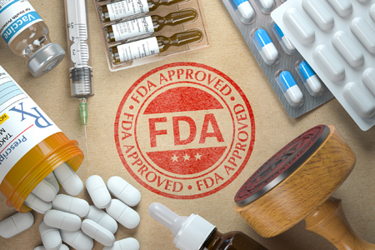6 Tips To Ensure Your NDA/BLA Is Ready For FDA Review
By Michael Cooper, Clinical and Regulatory Affairs, Pharmatech Associates

Preparing a marketing authorization application for an NDA or a BLA represents a herculean effort for any organization. One aspect that is easily overlooked by small start-ups and mature multi-product drug sponsors alike is verification that all commitments made to the FDA have been completed and that evidence of this has been submitted to the agency. Given the number of interactions with regulatory authorities that take place in development efforts that span years, commitments that slip through the cracks affect scheduling and have a ripple effect on planning activities for scale-up and launch.
The reader may wonder how a commitment to the FDA could possibly be overlooked in such a high-stakes environment as drug development and approval. In this author’s experience, lapses are a common occurrence over a many-year product development life cycle.
How Does It Happen?
Promising molecules are evaluated across multiple therapeutic indications — and associated IND — until the most favorable treatment area is identified. The typical program will pivot many times in response to incoming safety and efficacy data; manufacturing, testing, scale-up, and tech transfer challenges; and guidance and feedback from the FDA.
A small, nimble start-up organization can run into this problem because they run lean. Their resources tend to be overextended and people get asked to wear many hats. Large, multi-product sponsors may hand off programs to global regulatory affairs teams after U.S. approval. This passing of the baton is fraught with opportunities for miscommunication of critical information.
Consequences Of Overlooking A Commitment
No sponsor ever wants to get caught with egg on their face, in the form of an overlooked commitment, particularly given the potential ramifications.
The impact on submission review could be as serious as the FDA issuing a complete response letter (CRL) for the sponsor’s NDA or BLA. Even if a CRL is not received, there will certainly be an increased level of scrutiny by the agency reviewers.
Sponsors should consider the impact of not meeting a commitment on review timelines. An FDA reviewer seeking confirmation that a commitment was fulfilled will generate an Information Request (IR). This IR will be an unnecessary delay to timelines that could have been avoided if the sponsor had been better prepared.
Lastly, sponsors should consider their relationship with the FDA. An FDA project manager provides crucial guidance and advice to help you get over the finish line. Trust lost in this relationship is not easily regained. A reputation for sloppiness can also spill over into increased scrutiny during future on-site inspections of the sponsor’s manufacturing and testing sites.
Align Specifications In Your NDA / BLA
In one instance in my personal experience, a sponsor company’s product development and regulatory affairs teams disagreed over what the specifications for a recently approved product were. The sponsor had committed to update specifications as a condition of approval. This commitment was captured in the meeting minutes in the common technical document (CTD), in Section M.1.6.3 covering correspondence regarding meetings. However, Sections M.3.2.S.4.1 (covering specifications, drug substance) and M.3.2.P.5.1 (covering specifications, drug product) were not updated prior to program hand-off to the next team for global submissions. Fortunately, this scenario was a “near-miss,” as the sponsor caught and corrected the misalignment.
Because this was an already approved product, updated specifications were submitted in the next annual report to the agency. Note that administrative corrections may be submitted in Section M.1.13.7, the section referring to other significant new information. Use of this administrative pathway requires resubmitting impacted CTD sections, some of which may be considerably lengthy. Therefore, it should be used sparingly.
Keep Sight Of Old Commitments
One time, a sponsor was so focused on resolving clinical issues jeopardizing their program, in the form of multiple clinical holds that were issued and lifted, that they lost sight of earlier CMC and nonclinical commitments. These lapses were caught during the task of NDA preparation, but the lesson is clear. When a sponsor finds itself in a similar situation (e.g., a study that was never started), it should initiate the study as soon as possible. It is easier to ask forgiveness for a late action than for no action taken at all. Remember that you are trying to convey a sense of control over your program to the agency.
Close The Loop On Documentation
In another instance, a drug sponsor had completed the required work to fulfill its commitment, but proof of completion was never submitted to the FDA. This was a narrow escape that was caught by the sponsor. Had they failed to find this omission, it would have been noted by the FDA review team and generated an unneeded round of information request letters (IR), with consequent delays to approval and commercial launch.
In GMP inspections, there is an old adage that “if it wasn’t documented, then it wasn’t completed.” A corollary for NDAs/BLAs would be “if proof of completion wasn’t submitted, then the commitment wasn’t fulfilled.”
3 Critical Steps For Agency Communication
First, prior to IND submission, the sponsor should set up a robust system for storing agency communications on a secure server. Keep in mind that it is not unusual to contract out aspects of regulatory affairs such as regulatory operations during early product development and to store critical documents on the consultant’s server. It is also not unheard of to change consultants as the program proceeds, in which case all agency communications must be successfully transferred to a new system. This system must include a chronological record (Chron Log) of all documents, with a description and date.
Many sponsors do not take this step because they are not sure yet if their product will proceed successfully to licensure.
Second, prior to IND submission, create an agency communications tracker. This document can be as simple as an Excel spreadsheet with columns to describe the commitment, the date the commitment was made, and the date it was completed or if it is still pending. Update the tracker throughout the program.
Again, it may be tempting to skip this step when the success of the program is not ensured. However, it is extremely arduous to re-create the history if you wait until the product looks promising,
Third, prior to NDA/BLA submission, perform a readiness gap assessment. Many sponsors perform (or contract out) a mock preapproval inspection (PAI) in preparation for an FDA site visit. This exercise identifies a manufacturing site’s weak points from a GMP inspection perspective, so that they can be shored up before the FDA arrives. Because FDA approval is just as contingent on the review of documentation, a similar exercise must be performed on the quality, nonclinical, and clinical documents. The scope of an NDA/BLA readiness gap assessment should include a review of all commitments made to the agency, with verification that they have been completed and sent to the FDA as a submission.
This basic due diligence exercise must be performed prior to NDA/BLA submission. Failure to do so jeopardizes the entire product development effort.
Why Minding Details Is Important
There is a lot at stake when working to getting a drug approval. If creating and maintaining this critical information ever feels like a premature effort or administrative drudgery, then it is good to remember the stakeholders:
- Investors have infused a lot of money into the program. Stock prices will reflect positive and negative news with real consequences for the sponsor. Successful programs can result in generous milestone bonuses and potential acquisition if that is the sponsor’s goal. Failure to obtain approval, on the other hand, can result in employee layoffs or the sponsor turning out its lights.
- Dedicated employees have given up much of themselves, including working overtime, to respond to agency questions under tight timelines.
- Last but not least, patients and their families holding out hope for a promising treatment will or will not have access based on the sponsor’s ability to make a compelling case to the FDA.
Keeping track of details and following through on commitments is a fair expectation from the FDA to bring a new therapy to market.
About The Author:
 Michael Cooper is a clinical and regulatory affairs program manager at Pharmatech Associates. He has over 20 years of experience in the biopharmaceutical industry, with expertise in regulatory affairs chemistry, manufacturing, and controls (CMC) submissions; GMP inspections for biologics and vaccines; QA lot release of drug substance and drug product; deviation and CAPA resolution; and facilities, utilities, and equipment validation.
Michael Cooper is a clinical and regulatory affairs program manager at Pharmatech Associates. He has over 20 years of experience in the biopharmaceutical industry, with expertise in regulatory affairs chemistry, manufacturing, and controls (CMC) submissions; GMP inspections for biologics and vaccines; QA lot release of drug substance and drug product; deviation and CAPA resolution; and facilities, utilities, and equipment validation.
